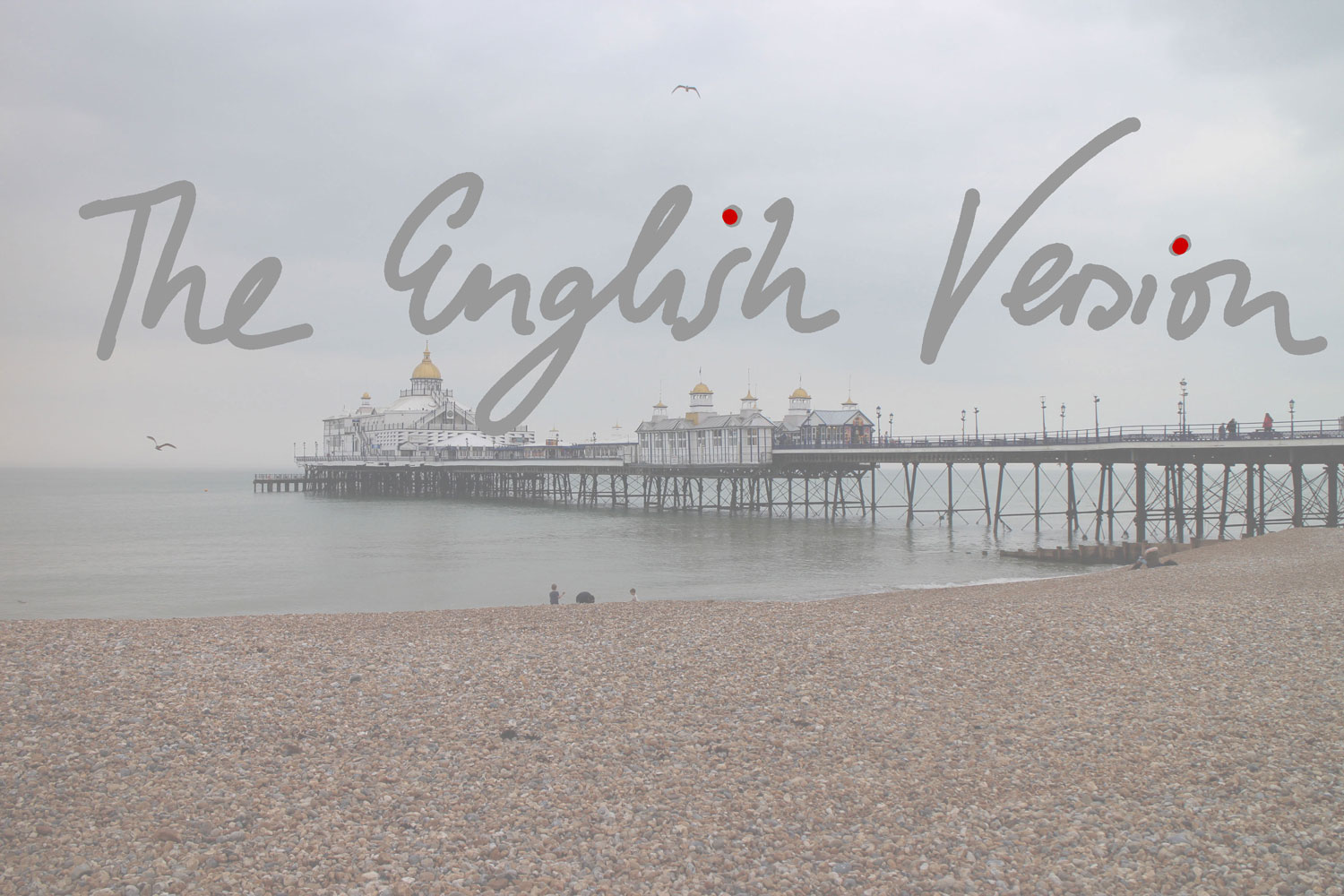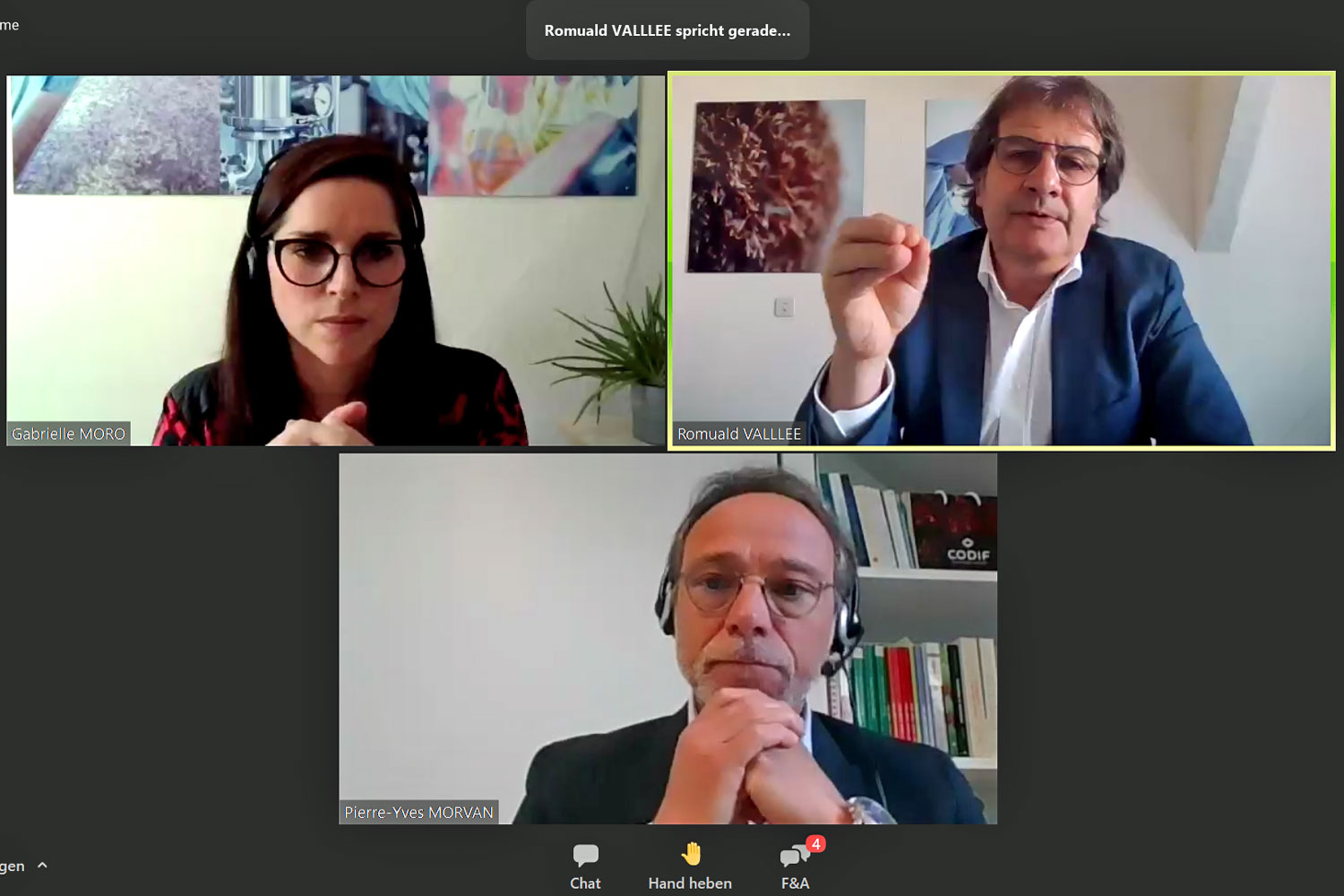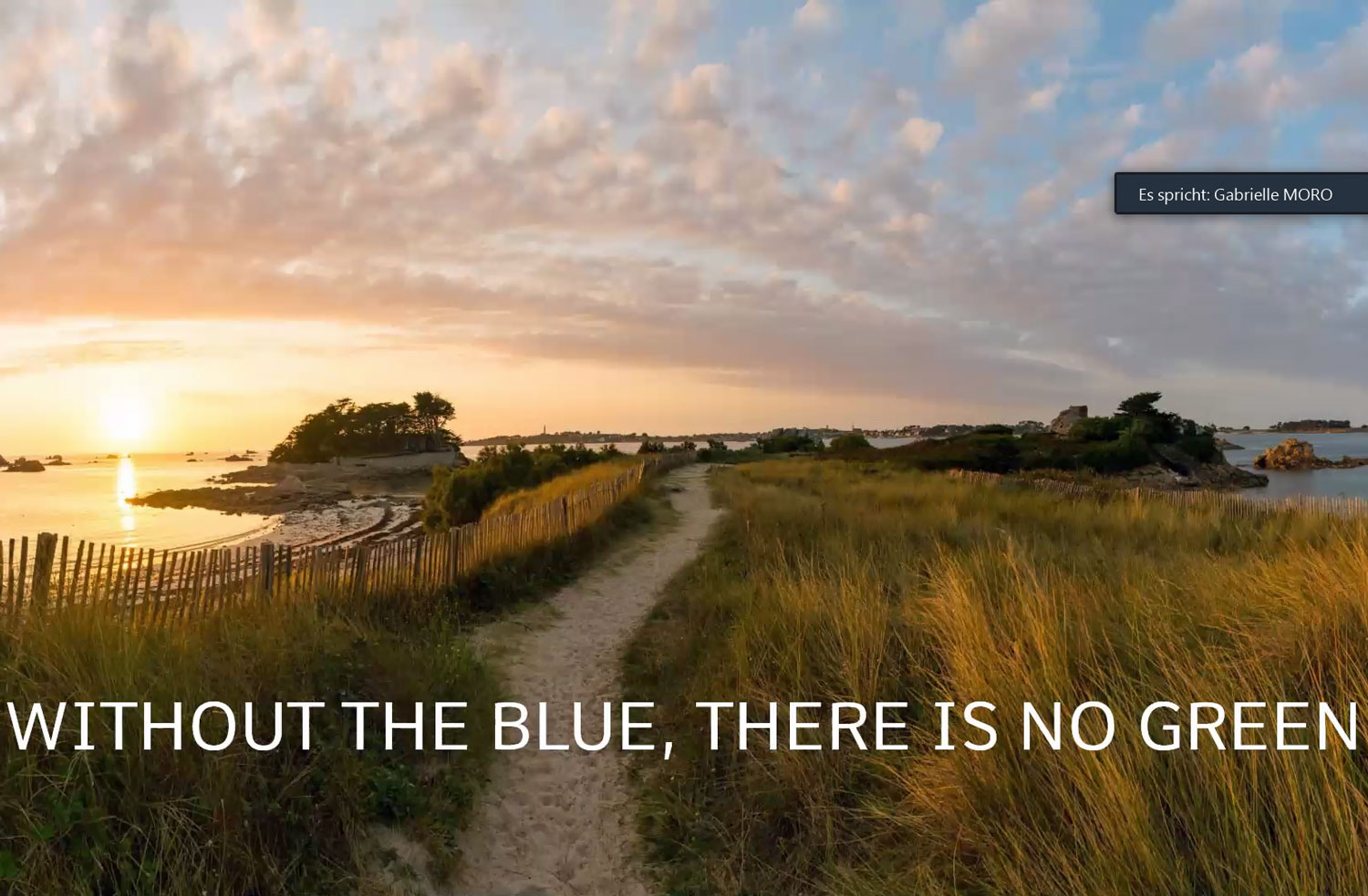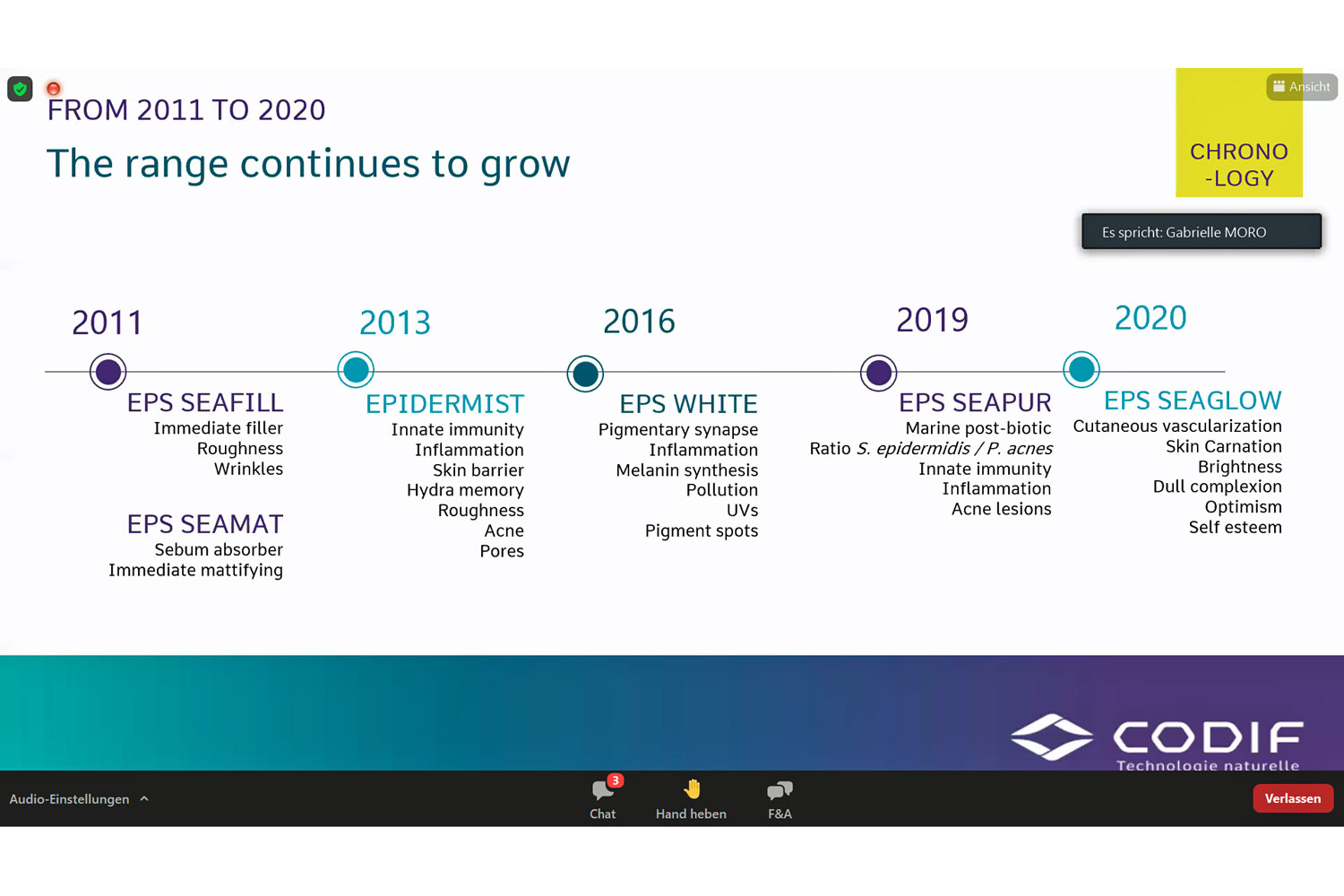This is a translation of my German blogpost Hinter den Beauty-Kulissen… ProTec Ingredia GmbH Proudly Presents: Blaue Biotechnologie für nachhaltige Kosmetik. Enjoy!
In cooperation with ProTec Ingredia // Attending the recent webinar of French marine ingredients manufacturer Codif almost felt like getting a fleeting impression of the Breton seaside – the murmuring of the sea, the seemingly endless horizon and fresh salt-laden breezes… Codif’s headquarters are located on the coast of Brittany and the constant presence of the ocean often inspires the company‘s team in the development of product innovations. I already told you about the brainstorming lunch-breaks at Codif in this chapter of my beauty serial story.
Originally CEO and co-founder Romuald Vallée, head of R&D Pierre-Yves Morvan and head of marketing Gabrielle Moro had planned to celebrate the tenth anniversary of Codif’s ExpoPolySaccharides actives group with a big celebration in Brittany. However, with the pandemic dragging on plans for the offline event had to be cancelled and instead, Codif organised a webinar for its business partners in late March. I attended the virtual event together with ProTec Ingredia and really enjoyed the marine odyssey that took us deep into the world of “Blue Biotechnology“.
Life began in the ocean
At 10am on the dot Gabrielle, Romuald and Pierre-Yves from Codif greeted their virtual visitors. Our journey into the world of the ExoPolySaccharides (or EPS for short, more on this later) began with some facts about the sea: 97% of our planet’s biodiversity is located in the ocean and almost 90% of these organisms are not visible to the naked eye. As of today, only 1% of the world’s marine biodiversity has even been researched – as you can see there are still many secrets left to explore.
From the beginning, Codif focused on algae as an ingredient for cosmetic products – no surprise really, because all life on earth began in the ocean. Around 3-4 billion years ago single-celled blue algae (which are scientifically known as cyanobacteria) started with the process of photosynthesis, releasing oxygen into the atmosphere. And that is how evolution began: those single-cell organisms developed into more complex algae in the ocean, then the first plants expanded onto dry land and this, in turn, led to the development of animals and, eventually, humans. We all still carry a trace of algae inside of us. You’ll see!
Without the blue, there is no green
More and more people demand cosmetics with natural ingredients that have a perceptible effect on the skin but are still manufactured sustainably. “Without the blue ocean there’s no green”, says Gabrielle. She means this quite literally in terms of the earth‘s evolution but also metaphorically: sustainable “green” cosmetics cannot exist without the sea and its extraordinarily high biodiversity.
What ExoPolySaccharides are
In 2010, Codif joined forces with Polymaris, a research project founded in 2008 to explore the waters of the 3,500 km long Breton coastline. “Sometimes you don’t have to travel far”, says Romuald. “Look at where you are right now and you’ll make fascinating discoveries.”
One of these exciting discoveries were the ExoPolySaccharides: sugar polymers produced by micro-organisms. If a bacterioplankton is stressed it releases Exopolysaccharides to protect itself. Codif uses this natural process to manufacture its EPS actives. You don’t need any solvents either – instead, the plankton is placed under oxidative stress. So far Codif has collected some 700 planktonic micro-organisms and identified 40 different ExoPolySaccharides.
Blue Bioth-Ecology
The active ingredients derived from ExoPolySaccharides are especially sustainable because once you have collected a small amount you don’t need to harvest the plant material in the ocean any more. Marine resources are conserved because Codif cultivates the planktonic micro-organisms in its own biobank. A milligram of harvested and isolated bacterioplanktons is sufficient for several tons of ExoPolySaccharides. Gabrielle calls this Codif-developed blue biotechnology process “Blue Bioth-Ecology”.
What ExoPolySaccharides can do in beauty products
Codif has been researching the effects of ExoPolySaccharides for ten years. In the beginning, it was assumed that the EPS would form a protective film on the surface of the skin. However, after a lot of additional research Codif realised that the EPS had much more to offer. Over the years the company has developed a range of cosmetic actives based on ExoPolySaccharides, each of which has a different effect on the skin.
A real milestone was the discovery of ExoPolySaccharides that are equipped with hydrophobic amino acids. They can penetrate human skin much more easily, adhering to the skin’s receptors. Codif also developed the patented HTAC technology (the acronym for HydroThermolysis Accelerated by SupercriticalCO2) which splits the ExoPolySaccharides into even smaller particles that can penetrate more deeply into the skin.
From 2015 onwards Codif began to focus its research activities on the skin’s microbiome. The composition of our skin flora is very similar to that of planktonic micro-organisms – our evolution from the depths of the ocean has left some very visible traces. As a result, ExoPolySaccharides (who are essentially postbiotics) are ideally suited to balance the microbiome of the human skin.
Cosmetic actives based on Codif’s ExoPolySaccharides
Thanks to these new research results Codif has launched several active ingredients based on EPS on the international cosmetics market:
- EPS Seafill is a kind of wrinkle filler that offers an immediate effect and is particularly suitable for the eye area.
- EPS Seamat absorbs excessive skin oil, regulates the skin’s sebum production and refines the pores. Since the EPS do not decrease the skin’s hydration levels, EPS Seamat doesn’t have a drying effect on the skin.
- Epidermist reduces the “bad” bacteria in the skin flora, soothes the skin and decreases its reactivity. Codif describes the action of Epidermist as “new skin effect”.
- EPS White reduces the skin’s melanin synthesis by decreasing the stimuli of melanin production. Skin looks more even-toned and hyperpigmentation is minimised.
- EPS Seapur helps to decrease acne bacteria on the skin, minimises inflammation and clarifies skin tone and texture.
- EPS Seaglow was launched just a few months ago. This active ingredient is especially suitable for sallow skin since it rejuvenates the skin’s natural rosy glow. Also exciting: EPS Seaglow has been proven to boost optimism and self-confidence.
The marine ingredients from Codif are available in Germany through ProTec Ingredia for business customers.
Our virtual visit to Brittany and its ocean ingredients concluded with a Q&A session. The next episode of my beauty soap will be all about the application of cosmetic actives… Stay tuned!





